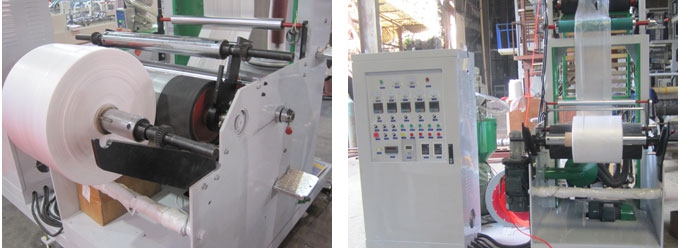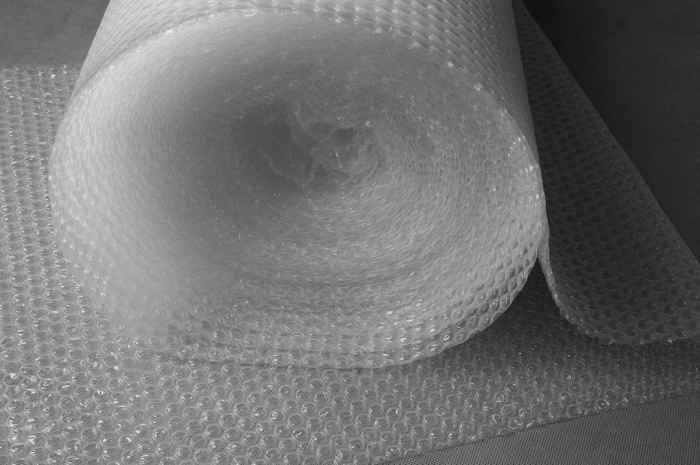When choosing a type of activity, each novice businessman is looking for a way to get guaranteed profits with small investments. Therefore, the manufactured products must be in demand. One type of such product is packaging materials: plastic and paper bags. Packaging is an integral part of almost any product. The production of packaging materials allows you to earn income regardless of the time of year.

Where to start production?
The initial stage of organizing any production requires the development of the necessary documentation. It will be required to register the type of activity, draw up a package of permits and endorse them in the appropriate authorities. On average, the cost of registration will be 300-400 dollars. This process can last from one to two months.
Every three months, the company is obliged to provide its products for examination on the conformity of its quality to state standards. An expert opinion costs between $ 25 and $ 35.
At the initial stage of development of polyethylene production, it is necessary to take care of waste disposal. With available funds, you can purchase processing equipment and equip it with a workshop. A cheaper way is to conclude an agreement with organizations involved in the processing of municipal solid waste.
For the successful implementation of a business project, it is necessary to establish a sales network from the very beginning. As a rule, wholesalers become the main buyers.
Basic equipment
The key to high quality polyethylene is high-quality equipment for the production of film. These devices are represented by a wide assortment, which, together with innovative technologies, even makes it possible to recycle raw materials and use it as starting materials for the manufacture of plastic packaging.
The production of packaging materials requires the following equipment:
- Extruder It is used for the processing of special blanks, polyethylene pellet-balls and the manufacture of finished film from polyethylene.
- Cutting and soldering machine. It is used to cut the film in accordance with the desired size. After that, using the machine, the package blanks are sealed on one side. Using this device, bags without handles or garbage bags are made.
- Punching press. Produces plastic bags with handles. He “cuts through” the holes, forming them.
- Flexographic machine. It is necessary for the manufacture of plastic bags with a picture or with the logo of a particular company. In addition, on the package you can draw a distinctive brand name of the manufacturing plant, which is an excellent advertisement.
- Devices for crushing and subsequent granulation of waste - recommended, but not required additional equipment. Required for processing waste generated. In the main production in the manufacture of garbage bags and packaging materials not related to the food industry, the use of recycled materials is allowed.
Equipment for the production of plastic film ranges from 100 to 180 thousand dollars, depending on the manufacturer and completeness.

Polyethylene manufacturing technology
Polymer granules from the hopper are fed into a loading special funnel. After that, they fall under the screw and, through their own friction against the cylinder walls, are heated up due to forced rotation.
As a result of this process, the granules are compacted and melted. Then, the raw materials from the extruder are fed under pressure to a forming device. The molded product is inflated to the desired size and then cooled. The production of the film is completed by passing through the stabilizing unit and pulling it folded along the guide rollers to the winding device.
Raw materials for the production of plastic bags
For the manufacture of plastic packaging, including bags, granular polyethylene of high or low pressure is used. The film made from polyethylene of the first type has high strength, it is difficult to tear it.
In addition, it successfully tolerates subzero temperatures. When using low-pressure polyethylene, the packages produced are more dense and stiff, but less transparent, resistant to high temperatures, chemicals and frost.
The cheapest is considered to be polyethylene raw materials of Korean or Russian origin. The cost of one ton of granular imported polyethylene ranges from 400 to 650 dollars, and domestic - within 350 dollars. For the manufacture of non-food packaging, recycled materials can be used.
Dyes are used to make bags made of polyethylene. Their cost is from 5 to 20 dollars per kilogram, depending on the color scheme.
Requirements for premises and staff
The workshop for the production of plastic film is recommended to be located away from the residential area, since the manufacturing process is accompanied by harmful emissions into the atmosphere. The area of production facilities should be at least 100-150 sq.m. at a height of at least 10 meters. All workshops must have a forced exhaust ventilation system.
Warehouses should have increased hydro and vapor barrier, since high humidity can reduce the quality of raw materials and final products.
Additional water supply, except as provided by sanitary standards, is not required. However, when the workshops are equipped with some devices for processing the generated waste, water consumption will increase. The voltage required for operation in the mains is 380V / 50Hz, 220 V.
As a working staff, it is not necessary to use highly qualified employees. Film production, thanks to the unpretentious technology and ease of maintenance of machines, allows you to quickly train beginners without the appropriate skills.
Types of film
Today, plastic film is produced in a wide variety of variations in width and thickness. For a long time, these products were used only as a convenient packaging material. Currently, a plastic packaging has a very significant and useful function - the application of the necessary information about the manufacturer or seller of the packaged goods or any services.
According to its purpose, the plastic film is divided into the following types:
- food;
- stretch;
- heat resistant;
- black
- reinforced and others.
For packaging, in addition to the usual film made of polyethylene, thermoshrinkable polymer and air bubble are widely used.
Production of shrink polymer films
Shrink films are called films that, when heated, contract and tightly fit the products packed in them.
The technology of shrink film production consists in the deformation of a heated polymer and its sharp cooling to room temperature, bypassing the process of formation of the elastic component of the deformation.The polymer becomes harder and the stretched macromolecules cannot return to their natural equilibrium state. Secondary heating of the film softens the polymer, the molecules try to return to a globular state, and the film shrinks in size.
Shrink film production is great for making food packaging. The product, packaged in such a material, is placed in a heating cabinet, heated to a certain temperature. The film tightly fits it, repeating the form.
Bubble Film Production
The production of an air bubble film consists in the formation of bubbles from heated polyethylene filled with dry air. This film, in addition to its usual properties, has the ability to withstand weathering, vibration, shock and shock.
Bubble film, the production of which is the creation of a layer of bubbles of polyethylene, on one or both sides coated with a plastic film, is a packaging material of increased strength. All bubbles have clear limitations, and therefore, when one of them is deformed, the others retain air within themselves, thereby preserving the protective properties.

An alternative to the "polyethylene business" is the production of paper packaging
No less popular, in comparison with the manufacture of packaging materials from polyethylene, is the production of paper packaging. Such products are divided into types of bag, wrapping and packaging. They are made of thick, moisture-resistant, greaseproof paper, as well as kraft paper or parchment and, depending on the application, the packaging can be recycled.

The production of packaging materials from paper consists of six stages:
- Workpiece production.
- Drawing drawings and logos.
- Bonding and bottom flashing.
- Production of prefabricated valve for a closed bag.
- Fastening the batch bottom.
- Packing bags in bales.
Paper packaging lines vary in equipment capacity and cost.
The set of basic necessary devices for the manufacture of environmentally friendly paper packaging includes:
- machine for gluing paper in multilayer blanks;
- a device for forming and gluing the bottom of paper bags;
- machines stitching and gluing semi-finished products.
The capacity of such a production line is about two hundred and fifty packets per hour, the price of a set of such equipment is about 23,000 thousand dollars. If necessary, you can purchase additional units.
Payback period
The simplest polyethylene bag production line is capable of producing about 3,000 items per hour. With an eight-hour working day, you can produce about 20 thousand packages a day. The wholesale price of one product is five times its cost. Profit in dollar terms is approximately 140-180 dollars per day. As a result, the production of packaging materials can recoup equipment costs in about 1 year.
The cost of an expanded and augmented paper packaging production line ranges from 87 to 145 thousand dollars. When organizing a small workshop with a production rate of about 250 packages per hour, cash costs of about 136 thousand dollars will be required.
At the same time, expenses for the purchase of equipment and blanks, repair of the premises, etc. The area of the workshop for production should be at least 100 sq.m. On average, the profitability of paper packaging production is 30%, the payback period is approximately one and a half years.








